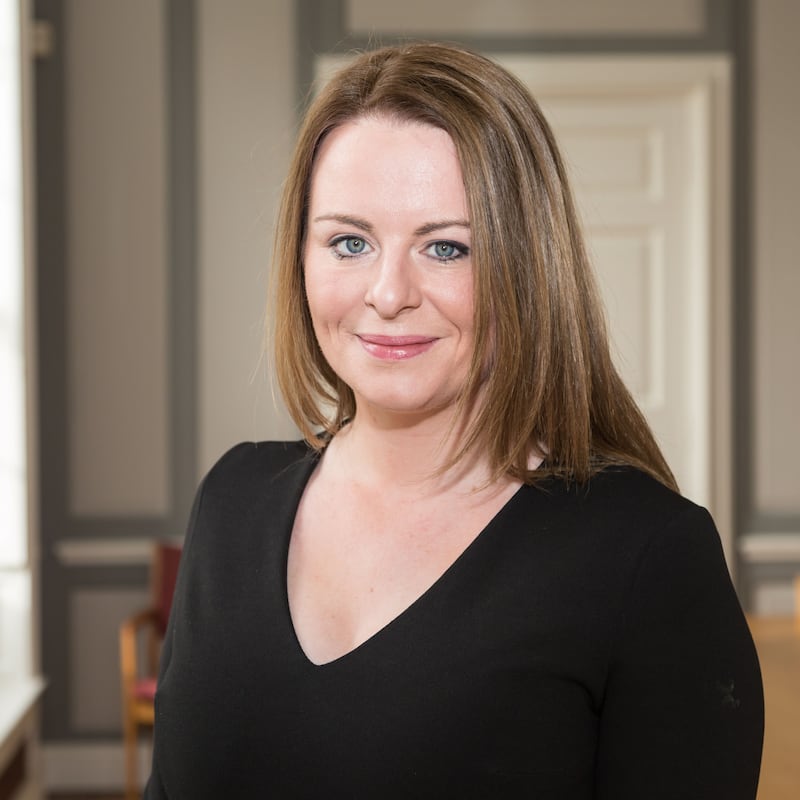A part of the busy daily busy routine at Missus Tatty’s Nursery in Clonee, west Dublin, is replying to the steady stream of parents who call or email hoping to find places for their children. “It’s disheartening to have to keep saying no to people,” says owner Rachel Prouse, “but I’ve only so many places.”
Missus Tatty’s can take around 90 children at any one time and quite a few spend their days with the 21 staff, but the combination of preschool and after-school care also offered means there are more than 130 on the books.
Sometimes, Ms Prouse says, she finds herself mulling over the possibility of expanding, perhaps by adding a room, but a lack of long term certainty would make the move a big gamble and anyway, she suggests, the daily calls would be unlikely to stop any time soon. “Demand is definitely outstripping supply.”
Substantial improvements in Government funding have actually contributed to the problem in one way, she says, but future increases are also absolutely key to addressing it.
READ MORE
“Before the new funding came we had talked about closing our baby room because we weren’t getting the numbers,” she says. “Now, we have a waiting list to the end of next year for the baby room. We’ve been inundated with people. I’d love to be able to fit more in but, you know, staff...”
Overall public funding will, five years earlier than previously planned, just about top €1 billion this year, a significant portion of which is earmarked for the improvement of wages
Staff, she says, are the key factor: getting them, retaining them and trying to pay enough to do both.
“Consistency of staff is hugely important in the childcare setting and some of my staff are with me more than 20 years, but there is more movement and in some cases people will chase a little more money. You need good staff though, and if you don’t treat them properly, you won’t have a business.”
Among the supports Missus Tatty’s receives is around €110,000 annually in what is called core funding, money intended to cover a variety of costs. There are also payments under the National Childcare Scheme, recent improvements to which have resulted in almost doubling, to 134,000, in the number of children impacted at around 4,300 facilities nationally.
Administrative demands
Overall public funding will, five years earlier than previously planned, just about top €1 billion this year, a significant portion of which is earmarked for the improvement of wages. The sector had agreed minimums for the first time last year and pay has certainly improved, often beyond those base figures because of demand, but talks on a new deal are currently heading for the Labour Court after a failure to reach agreement between employers and the main union, Siptu.
Though grateful for the security the funding provides – she no longer has to borrow to pay wages through the quieter holiday periods, like the one just ending – she says there are “huge” administrative demands associated with the different schemes.
[ Six in 10 workers say partner gave up work due to cost of childcare, survey findsOpens in new window ]
The regulations, she adds, “are very black and white when there are an awful lot of greys in childminding. We’ve lost a lot of our flexibility and that can be bad for parents too.”
Overall, she believes, the Government schemes are good things “but there are elements that need to be fixed and we need that to be recognised”.
Additional money would certainly be welcome, she suggests, although her own service is not currently under financial threat.
The most vocal of the representative bodies, the Federation of Early Childhood Providers, said again last week that many are under financial threat as the current funding system is not working.
“Services are permanently closing, children are being displaced [as] there is not enough funding to keep providers viable,” said Elaine Dunne, its chairwoman.
In its pre-Budget submission, Early Childhood Ireland (ECI), the umbrella body that represents the vast majority of providers, called on the Government and policymakers to “completely rethink” their approach to early years and school age care. According to its director of policy Frances Byrne, childcare policy has, for years, been “underpinned by economic requirements, rather than what children need and deserve”.
A spokesman for the Minister for Children, Roderic O’Gorman, however, said the available evidence did not support the mounting sense of crisis that the federation talks about.
Retirement
Figures from Tusla show closures, which have to be registered, are down on recent years and though citing reasons for closing is not mandatory, just five of the 42 in the first six months of the year were attributed to financial factors, fewer than put down to expiring leases. Retirements, dropping child numbers and staff shortages were among the other factors mentioned. Just a dozen applications were made to a special Government sustainability fund, intended to help providers in trouble, and only three were deemed eligible for support.
DCU assistant professor Grainne McKenna, who specialises in early childhood education, believes a significant portion of current departures may be tied to the retirement of people who established services based on a previous round of Government funding more than 20 years ago.

She also believes, however, that the impact of early issues with core funding has been cushioned by what were essentially overly generous pandemic subsidies to the sector. As that money runs out, she suggests, providers who might have been operating at a loss will lose their wriggle room.
“I think maybe they [the Government] slightly overestimated what was needed but the money did mean the services had a buffer, which has made the implementation of the new core funding slightly more palatable. But that goodwill is going to run out.
“I’m the chairperson of a community-based creche in Ballymun. We’re only a small setting and we had a surplus of €200,000.”
In the cases of the very largest operators the scale of the subsidies paid ran into several million euro with company accounts filed pointing to the accumulation of substantial cash reserves over the period of the pandemic.
People talk about a Scandinavian model of childcare and that’s not just about children running about in wellies and wetsuits all day
— Grainne McKenna, DCU assistant professor specialising in early childhood education
Siptu says not just its members but also many of the sector’s employers have been angered by last week’s offer of a €13.65 basic minimum rate (many employers already pay more and rates are also structured according to qualifications and other factors but the additional amounts are modest) for the sector’s 26,000 early educators. It point to figures contained in company returns as evidence of an ability of pay more.
“There are a lot of different types of operators in the sector, good and bad in all of them, says Siptu’s organiser in the sector, Darragh O’Connor, “but I’ve yet to see evidence of that operators are generally unprofitable.”
High quality
Ms McKenna sees the growing, though still relatively small, corporate involvement in the market as a concern. Many small “for profits” among the roughly 4,300 provide very high quality services but, she suggests, “when you see holding companies featuring in the sector you wonder where the money is going”.
“People talk about a Scandinavian model of childcare and that’s not just about children running about in wellies and wetsuits all day. What they mean by it is a co-ordinated system, that is accountable and where we are careful with how public funds are spent. It needs to be recognised as a really, really important service and an essential social and economic infrastructure.”
At ECI, Ms Byrne sees the mix of providers within the sector, which also includes a large not-for-profit element and many individual providers, “as really welcome because it means that we have a lot of offerings, which is a great strength given the very different needs of children and their parents. One size just won’t fit all.”
The Government, she acknowledges, faces policy challenges in terms of how it addresses those many different needs and the organisation believes there is a pressing need for a five year plan that everybody can work off.
“Staffing is absolutely the number one issue we hear about from operators in the sector,” she says, “and uncertainty around it has the potential to impact on delivering quality for children.”
Roderic O’Gorman’s spokesman says that the Minister and the rest of Government, are keenly aware of the need to build on what has been done to date but argues that the country was coming from such a low historical base that it will take time.
Most of the stakeholders acknowledge his commitment to improving the sector and the essential services it provides. Nobody, though, really sounds as though they expect to be entirely happy after the coming budget and parents across the country are sure to still be desperately phoning around looking for places for the foreseeable future.

















